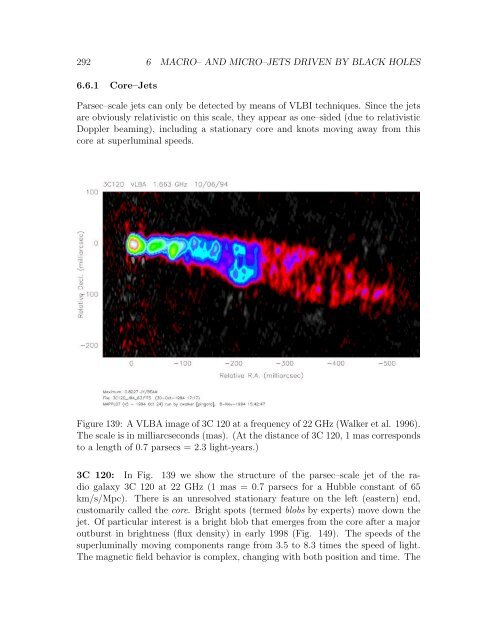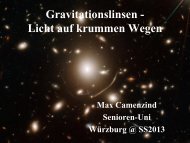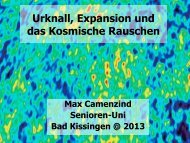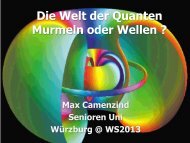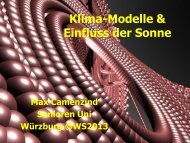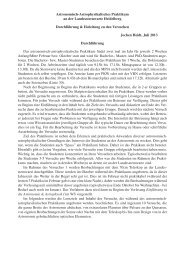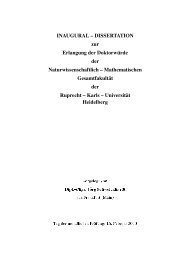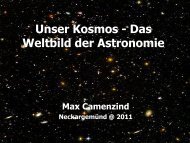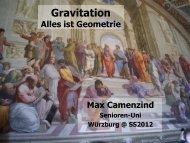Contents List of Figures
Contents List of Figures
Contents List of Figures
Create successful ePaper yourself
Turn your PDF publications into a flip-book with our unique Google optimized e-Paper software.
292 6 MACRO– AND MICRO–JETS DRIVEN BY BLACK HOLES<br />
6.6.1 Core–Jets<br />
Parsec–scale jets can only be detected by means <strong>of</strong> VLBI techniques. Since the jets<br />
are obviously relativistic on this scale, they appear as one–sided (due to relativistic<br />
Doppler beaming), including a stationary core and knots moving away from this<br />
core at superluminal speeds.<br />
Figure 139: A VLBA image <strong>of</strong> 3C 120 at a frequency <strong>of</strong> 22 GHz (Walker et al. 1996).<br />
The scale is in milliarcseconds (mas). (At the distance <strong>of</strong> 3C 120, 1 mas corresponds<br />
to a length <strong>of</strong> 0.7 parsecs = 2.3 light-years.)<br />
3C 120: In Fig. 139 we show the structure <strong>of</strong> the parsec–scale jet <strong>of</strong> the radio<br />
galaxy 3C 120 at 22 GHz (1 mas = 0.7 parsecs for a Hubble constant <strong>of</strong> 65<br />
km/s/Mpc). There is an unresolved stationary feature on the left (eastern) end,<br />
customarily called the core. Bright spots (termed blobs by experts) move down the<br />
jet. Of particular interest is a bright blob that emerges from the core after a major<br />
outburst in brightness (flux density) in early 1998 (Fig. 149). The speeds <strong>of</strong> the<br />
superluminally moving components range from 3.5 to 8.3 times the speed <strong>of</strong> light.<br />
The magnetic field behavior is complex, changing with both position and time. The


